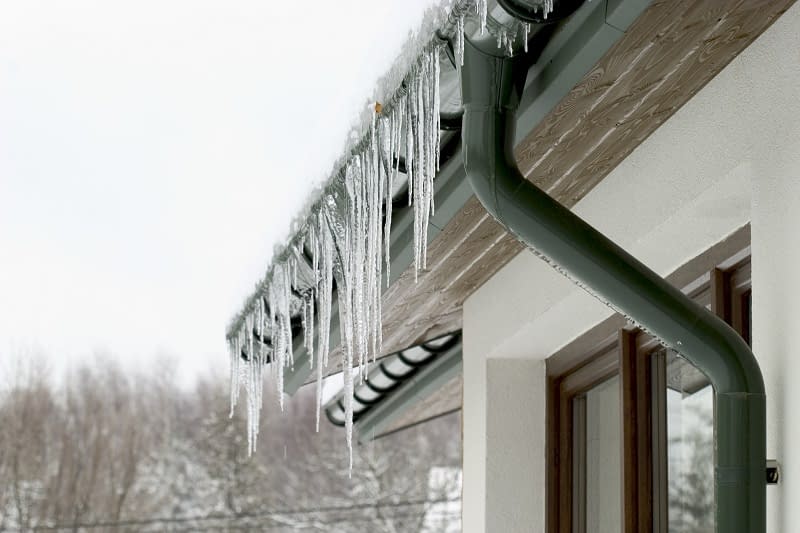
Winter Weather Effects on North Texas Roofs
Residential Roofing Services: Protecting Your Home Against North Texas Winter Weather
Understand the Damage Wrought by Unpredictable Winter Weather
In North Texas, we are all too familiar with the dramatic weather swings that can see balmy 70-degree days plummet to near freezing within 24 hours. Mix in occasional rain, sleet, or snow, and you’ve got yourself a typical Texas winter. As a homeowner, one of your top priorities is to ensure the integrity of your roof system against these weather challenges. Severe winter weather can cause serious damage to your roof, particularly if routine maintenance and inspections have been overlooked. Let’s delve into some common winter effects on North Texas roofs.
The Menace of Hailstorms
Texas homeowners understand the devastation of ice and hail storms all too well. Hail, ranging from the size of a quarter to that of a softball, can unpredictably wreak havoc on your roof. Large or strong hailstones can pierce your roofing system, resulting in leaks and structural damage. Although it’s challenging to predict a hailstorm, understanding its effects might motivate you to proactively spot minor issues.
Spotting Hail Damage on Your Roof
Hail damage can be insidious and not immediately obvious. Conducting an inspection after a storm will help you identify any possible damage. Inspect your shingles for signs like cracking, missing granules, or bruising. Circular cracks or dimples are often indicative of hail damage.
Handling Accumulated Snow
While North Texas rarely sees significant snowfall, it’s crucial for homeowners to know how to properly manage their roof system following a snow event. Heavy snow can exert undue pressure on the roof, leading to cracks and leaks. This issue is more prevalent in older roofs, but newer ones aren’t immune either.
Ice Dams: A Silent Threat
Ice is a common sight in North Texas winters, often forming along the edges of roofs. This freezing process can result in ice dams, which block water and melting snow from draining off the roof. The accumulated water can put stress on the roof system, leading to leaks.
The Dangers of Damaged Flashing
Winter weather in North Texas presents a unique challenge to your home, particularly to your roof’s flashing. This essential component—the sheet metal meticulously applied over your roof’s joints—works tirelessly to divert water flow, safeguarding your home from unwanted leaks and subsequent water damage. Crafted from robust and durable metal, flashing is designed to weather the storm, both figuratively and literally.
However, even this robust defense has its Achilles heel. Harsh winter conditions can lead to your flashing pulling away from the roof. This subtle shift can expose your home to the risk of water damage—damage that could be both costly and disruptive to repair.
But there’s good news! You don’t have to face this threat alone.
Here’s How We Can Help
If you suspect that your flashing may be damaged or deficient, don’t wait until it’s too late. Our team of seasoned professionals at Joe Hall Roofing is ready and waiting to help. With just one call, we’ll arrive at your doorstep, ready to conduct a comprehensive analysis of your roof. We’ll inspect your flashing thoroughly, identify any issues, and provide you with an effective, efficient, and affordable solution.
Remember, early detection is key when it comes to maintaining the integrity of your roof. Act now to protect your home from potential water damage.
Ready for a Roof Check?
Don’t let the threat of damaged flashing hang over your head. Reach out to us today at Joe Hall Roofing & Contracting and enjoy the peace of mind knowing your roof is in expert hands. Trust us, your roof will thank you.
Sure, here’s an enhanced version incorporating your company’s history and expertise:
Ensuring Your Roof’s Longevity with Joe Hall Roofing’s Industry-Leading Expertise
For more than 35 years, Joe Hall Roofing & Contracting has been a stalwart defender of North Texas homes against the unpredictable elements. We’ve weathered countless winters, witnessing first-hand the challenges that each season brings. Our deep-rooted experience and vast industry knowledge are the pillars of our residential roofing services—a testament to the countless roofs we’ve repaired and replaced over the decades.
At Joe Hall Roofing & Contracting, we don’t just install high-quality roofing materials; we provide you with a long-lasting shield that stands tall against Mother Nature’s curveballs. Our team of seasoned professionals is trained to spot minor issues that, if ignored, could escalate into costly repairs. They utilize their honed expertise to ensure your roof is always in optimal condition, ready to face whatever weather North Texas brings.
Remember, ensuring your roof’s longevity goes beyond initial installation—it’s about committing to regular maintenance and timely inspections. This practice allows you to identify potential issues early and resolve them promptly, keeping your roof at peak performance year-round.
Benefit from Our 35 Years of Industry Expertise
With Joe Hall Roofing & Contracting, you’re not just getting a service—you’re getting a partnership that extends over time. We’ve proudly served North Texas for over three decades, and we understand the unique challenges of maintaining a roof in this region better than anyone else.
Choose Joe Hall Roofing & Contracting and benefit from our history of exceptional service and our commitment to safeguarding your home. Let us bring our wealth of experience to your rooftop, ensuring it remains weather-ready, no matter the season.